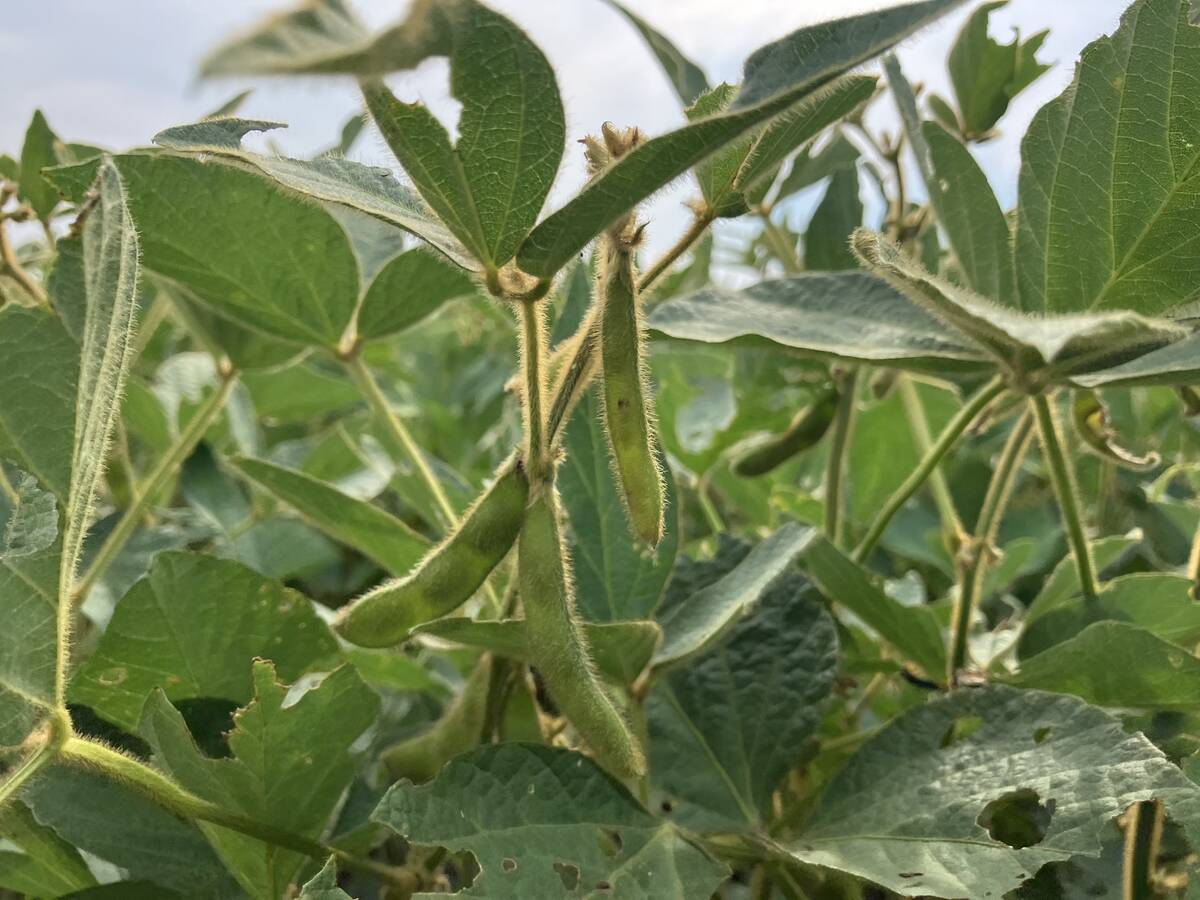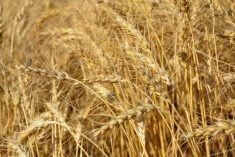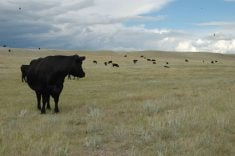If the farmers who read the Western Producer in its early years weren’t thinking about buying a newfangled machine called a combined harvester, their wives probably were.
“Women are spared the annual burden of cooking for an ‘army’ of harvest hands,” declared an advertisement for the Holt Combined Harvester in a 1929 edition of the paper.
That would have been welcome news for prairie women who each harvest season could count on feeding as many as a dozen hands for weeks while the crop was laboriously harvested.
Read Also

Soybean market still figuring out implications of China-U.S. pact
Soybean futures had a muted reaction to the U.S. trade deal with China as the market tries to figure out the nuances of the deal.
A horse-drawn binder cut the crop and put it into sheaves. Harvest hands would pile the sheaves into stooks or shocks. After drying, they would be placed on a rack wagon and taken to the threshing machine, which was powered by belts running to a steam engine.
The Producer started life in 1923, just as a new revolution in power farming was starting to sweep North America.
The small, all-purpose gasoline tractor came first. And along with it came new implements designed for the greater power the tractor offered over teams of horses.
By the second half of the decade, the first combines started appearing, taking advantage of the tractor’s power.
It took decades for the machine to dominate the harvesting process, but its invention signaled the beginning of the end of an era of steam, horses and harvest labourers.
There were several incentives for buying a combine. It would cut and harvest grain much faster than the older binder and thresher system. The combine increased harvested yields by a bushelor two per acre and it saved money, mainly through reduced labour requirements.
But combines were expensive, at $1,500-$3,600 before delivery. They were also heavy and not well suited to hilly land.
Labour key factor
Before the combine came to dominate harvest, there was an annual migration of workers from Eastern Canada to help take in the crop.
The railways would put on special harvest excursions. An advertisement in 1928 by the Employment Service of Canada announced that excursion trains would arrive in Winnipeg Aug. 13, 17 and 24.
“Harvesters will arrive in the thousands on these dates and it is necessary that they be distributed throughout the province without delay,” the ad announced.
That year it was estimated that 75,000 labourers would be needed to harvest the crop.
Farmers were encouraged to wire or phone the employment department to tell how many workers were needed.
But with a combine, only two or three hands were needed at harvest time.
In May 1928, the Producer ran an article by Charles Noble, the master farmer and inventor from Nobleford, Alta., who discussed his experience with the combine.
“The large labour saving in favour of the combine is not questioned. It is entirely a matter of whether we can safely allow grain to stand uncut until it is in fit condition to combine and if not, will the swathing method provide all necessary protection for these extreme conditions and assure us a good grade and price.”
Indeed, swathing developed into the solution for most farmers to deal with variable ripening and unpredictable harvest weather.
On Noble’s farm, a harvest team under the old system had eight men hauling bundles and pitching them into the thresher, a cook and helper, a man to run the thresher and 12 horses.
He calculated the total costs of men, animals, fuel and supplies at 12 cents per bu.
With a combine he needed only two men and the cost was slightly more than four cents per bu.
A horse-drawn binder could cut 15 acres a day. A combine with a 16 foot header pulled with an 18Ð36 tractor could cut and thresh 34 acres per day.
He also noted that all the equipment needed by a large threshing crew, including mobile cook house, dining utensils and bedding, probably added another $1,200 to the cost of the binder-thresher system.
Those savings sparked a combine frenzy in the late 1920s.
In 1928, 3,560 combines were sold in Canada, an increase of more than 600 percent over the year before.
In 1929 the Producer ran a four-part series relating the combining experience of dozens of farmers.
All were sold on the fast and inexpensive harvest they got from combining.
An unnamed farmer from Gull Lake, Sask., had this to say:
“In regard to savings: twine, shooking and grain waste saved will make a payment on the combine, take care of the repairs and will pay for the machine in three payments. Besides, the combine makes easy work for man, woman and beast. I would never think of going back.”
But the combine’s popularity exploded just as wheat prices collapsed and the drought of the 1930s descended.
By 1931 only 179 combines were sold on the Prairies. Binders and threshers remained a common sight. Despite the Depression, combine technology did develop, albeit slowly.
In 1938 Massey-Harris introduced the first commercially successful self-propelled combine.
The Second World War renewed interest in the combine. The weather improved, yields climbed and grain prices rose. But with young men signing up for the war effort, labour was at a premium.
The number of combines sold in Canada jumped to 5,069 in 1940.
By 1956 Prairie farmers owned 110,000 combines.
In the succeeding decades, combine capacity increased and operator comfort began to be considered with cabs, climate control and radios.
In the 1970s the rotary combine was introduced. Today’s combines are acre-eating, high-tech behemoths.
The first combines could harvest 30-40 acres per day. The latest combines can harvest 10 times that area.
Combines are now equipped with global position systems, technology for producing yield maps and sophisticated internal monitoring systems.
But there is a cost.
While the first combines cost about $2,000, units today cost more than $200,000. With an on-farm wheat price of 70 cents to $1 per bu. in the late 1920s, it would take 2,000-3,000 bu. to buy a combine. At today’s on-farm prices a combine costs more than 50,000 bu.














